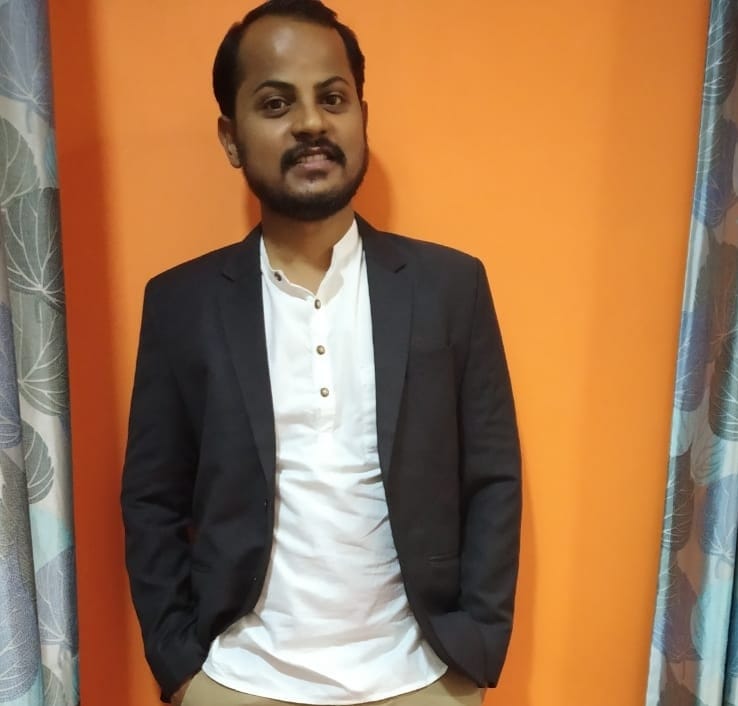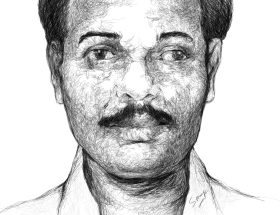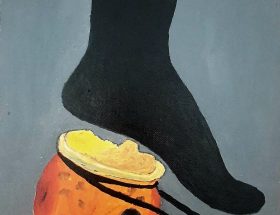Nikhil Walde

Jayanti is a very unique movie in Marathi Cinema that touches the very core of Ambedkar’s philosophy and his vision of ‘Educate, Agitate and Organise’. The movie is directed by Shailesh Narwade who is an Ambedkarite and the cast is from the Bahujan community. In this way, this movie is an insider’s work which makes it more imperative from the point of view of the social and cultural movement. Jayanti is not only a dark movie with a very strong social message but it also has elements like drama, love and comedy which amuses the audience.
Jayanti is also unique for its language, it has used Vidarbha’s local Marathi language that makes this movie more interesting.
The horizon of the movie is of course not limited to Dalits only, it is relevant to other middle castes especially Shudras (the people who are at the bottom of the caste hierarchy and were serving the top three Varnas as servants) (Ambedkar, Vol:7, 1947). some of whom are living in the false consciousness that they had not been discriminated and humiliated by Brahmins in history, and therefore, live in caste arrogance. In this direction, the protagonist reading the book ‘Who were the Shudras’ written by Dr. Ambedkar, in the film, symbolizes the depth of the subject and its importance to break this false consciousness.
Locating the Problem: Know History to Create History
Jayanti in a way denotes Ambedkar’s message to the audience, that ‘those who do not know the history cannot make a history’. In the case of Santya who is a staunch follower of King Shivaji Maharaj but hardly knows anything about the history of Shivaji. This ignorance and lack of effort to know about one’s own history results in caste arrogance. In this direction, the movie clearly depicts the caste-based prejudices of the Shudras who did not even tolerate the name of Dr. Ambedkar in their families. Even Santya does not have any love towards Dr. Ambedkar. It is because Dalits are his friends he helps them organize Ambedkar Jayanti and Dalits also help Santya organize Shivaji Jayanti.
It is in this context, the idea of Jayanti is to enlighten that these people are Andh Bhakts (blind followers) who remember their great leaders only on their respective Jayanti/s, which become occasions for them to merely drink, dance to loud music and do Narebaji (sloganeering). Celebration of Jayanti of a great leader like Ambedkar is meaningful when the people who celebrate it focus on education, nurse a noble vision, and work towards a democratic and moral society. This simple message is what I can draw from Jayanti.
Role of Ambedkarites to educate and break the prejudices of Caste
There are certain Ambedkarite characters like Ashok Mali from the OBC caste,(the same caste that the great social reformer Mahatma Jotirao Phule belongs to) who is in an ideological conflict with Santya whom he tries to acquaint with his history and importance of education.
The second essential Ambedkarite character is a Dalit-Buddhist girl Pallavi. Santya falls in love with this girl and wishes to marry her. As she is a well educated, intellectual and modern, he believes that she must be from an ‘upper caste’ family. But as Rahul, a Dalit Ambedkarite friend, reveals to Santya that she is a Dalit, he is surprised that such a good looking, well dressed and educated girl could be a Dalit.
On this Rahul says; Ambedkarite lokanchihech tar khasiyata hekithyanchi jaatdisatnahi (‘this is the specialty of Ambedkarites that their caste cannot be identified’). In this way, the stereotypical mindset and prejudices of upper castes towards Dalits that they are poor, grimy and illiterate has been very consciously broken by this movie.

While Santya, from a Shudra caste, is the central focus of the movie, however, these three very important Ambedkarite characters discussed above are very visible. They play a very significant role in educating people about the importance of education and the very relevance of the teachings of great leaders like Shivaji, Mahatma Phule and Dr. Ambedkar.
Things get serious after the incident of the rape and murder of an Adivasi woman. The occasion of Ambedkar Jayanti in the locality also becomes a turning point for Santya where, in an inebriated state, he expresses his love towards Pallavi who outrightly rejects the proposal and asks Santya what his credibility is and where he stands. Being a Mavla (devotee) of King Shivaji he fails to express the work of the great leader. Even an Ambedkarite could not justify Ambedkar beyond a constitutional maker. On this very note, Pallavi’s powerful speech to Santya is not limited to him, it is for all those ignorant, caste prejudiced and blind followers of great leaders like Ambedkar, who do not take education seriously, do not read about their great leaders, do not dig into their historical reality to understand who they were and what their vision of life was. After listening to the powerful and enlightening speech by Pallavi, Santya’s mind is blown and in frustration, he goes to the business man’s house to avenge the rape of the Adivasi woman. For this act the police arrest him and take him into custody.
Transformation from a Rowdy to a Benevolent and Compassionate Human Being
Mali teacher plans to provide a daily newspaper to Santya in the lockup to cultivate his reading habit. Subsequently he gives him a book called ‘Who was Shivaji?’ written by Govind Pansare and then Ambedkar’s biography written by Dhananjay Keer and some more reading materials on Ambedkar and Phule.
Reading these books Santya understands his history, the situation of his community and how caste prejudices and discrimination have been practiced. He understands his iniquitous behavior with his Dalit friends and Muslims. He realizes that his caste prejudices and antagonism towards Ambedkar was wrong, and gets to know, how valuable were the contributions of Dr. Ambedkar for the liberation of the poor, marginalized and the society at large to make it more democratic, moral and humanitarian.
The transformation of Santya from being a rowdy to becoming a benevolent and compassionate individual by reading books shows the power of literature and books in the Ambedkarite movement. This transformation expressed through a beautiful song in the background is so touching and emotionally appealing to the audience. Books have helped Santya liberate himself and given him a new vision of Ambedkarism to work towards the idea of Bahujan unity for a democratic and moral society.
Struggle from within and the idea of Bahujan Unity
The movie isn’t just a critique on the system or institutions, but it is indeed a fight and struggle within the community to raise their consciousness towards the importance of education. Here, an Ambedkarite OBC person has tried to educate his own community who are living in false consciousness. Santya started this mission from his own home and proved to his family, how Ambedkar is important and relevant to them.
In a way this movie is trying to hint towards ‘Bahujan’ unity, as portrayed by the Dalit, Adivasi (tribal), Minorities and Backward communities fighting together as an organized force to get justice for the Adivasi woman who was raped and killed by the upper caste businessman. They win the case in the High Court. The victory of the case has been depicted where the son of the victim runs towards his home and in front of his mother’s photo says:”aai tyale saja zaliaa panjinkalo” (Mother we won, he is punished).
However, one of the limitations of the movie is that while locating the Tribal community in the movie there should have been some kind of reference to their autonomy while fighting the rape case, instead of showing them as mere victims. This limitation is further seen, when we observe photos of all great Bahujan leaders in Santya’s office, but miss the representation of Adivasi leader Shahid Birsa Munda among those photos. I see that this may not be done intentionally by the film makers. Nevertheless, this may question the idea of Bahujans and their unity, one way or the other.
Therefore, I would suggest that in future projects, the makers should think critically on such effects and minimize their shortcomings. I recommend that all people should watch this movie and critically reflect on it.
~
References
Ambedkar, B. R. (1947). Who were the Shudras? Mumbai: Dr. Babasaheb Ambedkar Source Material Publication Committee, Maharashtra State.
~~~
Nikhil Walde is a PhD Research Scholar in School of Research Methodology, Tata Institute of Social Sciences, Mumbai. His Research Interests are caste, education, Buddhism.










